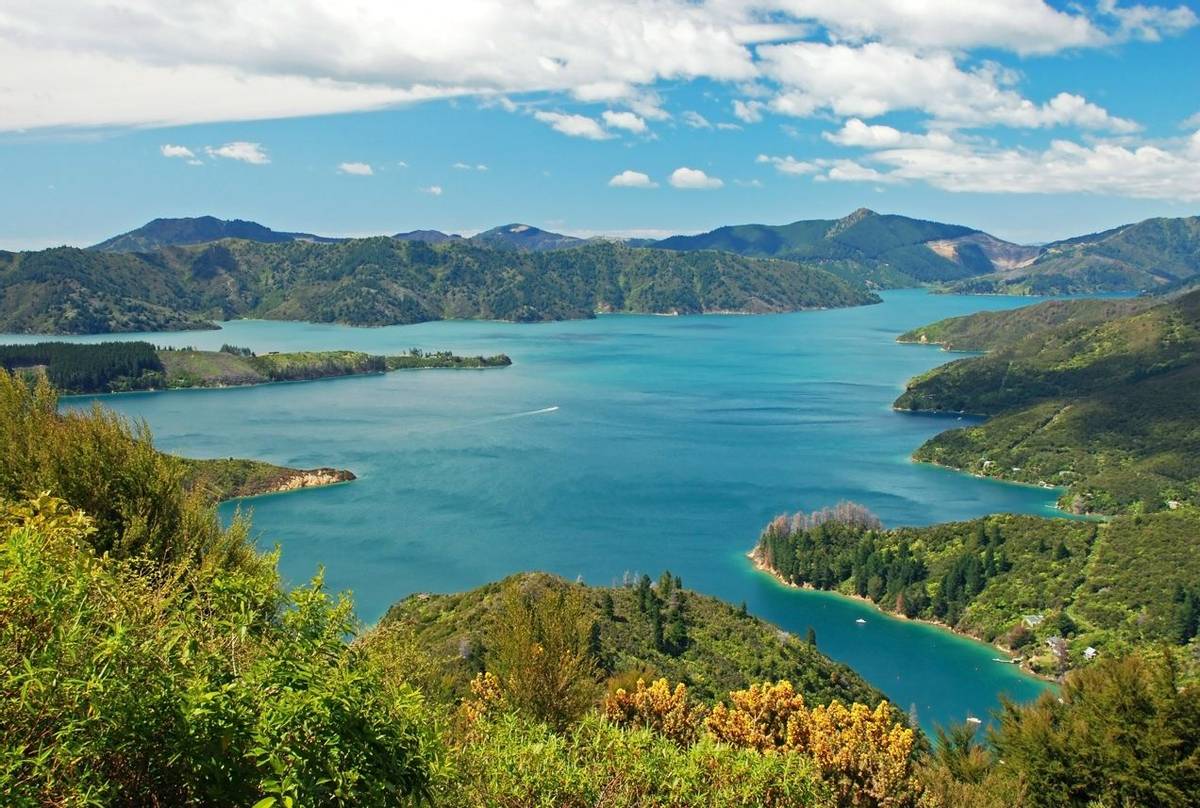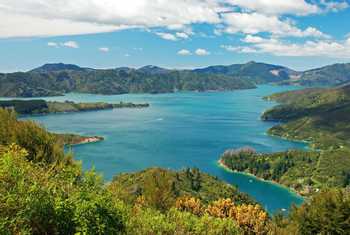Brilliant holiday with 12 people in our group. Our guide from New Zealand delivered an excellent itinerary including places where tourists would not have known to go. He also knew how to avoid the tourists when we visited the well-known sites. We spent the best part of three weeks covering the north and south islands and Stewart Island. During travel on our coach our guide imparted his knowledge and experience of life as it has been, and how it now is, in New Zealand, as well as the birds and botany experience. I could not have asked for more in having a nature tour that managed to encompass the varied landscapes of New Zealand.
A.N., Somerset, Jan 25



Tour Itinerary and Reports
Can I help you?
New Zealand's Birds & Botany
Tour Code: NZL01A 21-day tour of New Zealand's diverse natural history, including coastal, island and upland birdwatching and botanical sites, varying from the ancient and majestic Kauri and podocarp forests, to the many endemic alpine flowers, herbs and shrubs of the southern mountains, with their accompanying fauna.
£8,995
£7,795
Highlights
Tour Itinerary and Reports
Can I help you?
Quick Enquiry
Summary
The forests of Aotearoa (the Māori name for New Zealand) are a reminder of a world now long gone, of ferns, ancient conifers, flightless ground birds, prehistoric reptiles and insects, and virtually no mammals. We traverse the North Island from Auckland to Wellington, then the length of the South Island, visiting coastal regions where we'll watch for pelagic birds as well as marine mammals and go in search of the finest forest habitats amidst dramatic, fascinating landscapes. From the sub-Antarctic beech forests to the ever-changing podocarp forests of the volcanic plateau, we study the intricacies of the forests, their birdlife and the landscapes that make New Zealand the incredible land it is.
- Visit giant Kauri forests near Auckland
- Enjoy native birdlife on Tiritiri Matangi and Stewart Islands
- Discover alpine and sub-alpine plants on both North & South Islands
- Watch seabirds and marine-life at Kaikoura & Milford Sound
- Explore podocarp forests for plants & birds
- Stunning scenery
Amidst the grand peaks, rainforests, wetlands and splendid coastal habitats of New Zealand, there exists an intricately diverse and intriguing variety of native flora and fauna. Indeed, a substantial portion of the country happily still remains shrouded in forest, and much of this is today protected by national park or forest park status, giving refuge to the native wildlife. These forests are evergreen, the moist yellowgreens of the podocarp rainforest contrasting with the hardy olive-green of the southern beeches. In the north, ancient Kauri forest towers majestically high; like a number of other New Zealand plants, it is a close relative of tree species from the time of the dinosaurs. Some of the birdlife still appears to be prehistoric in nature, with various endemic species being flightless.
Early separation from an ancient southern continent, and a subsequent tumultuous geological history of uplift and submergence, gave rise to a New Zealand with no mammals except bats. It is this unique history and circumstance that have left a most significant mark on the diversity of the islands’ plant and wildlife species, as well as on the varied, everchanging landscape. Around 93% of New Zealand’s alpine plants are endemic, a remarkable statistic for a country so small and isolated. However, also leaving their marks (of tooth and hoof!) on the indigenous vegetation are the hoards of mammalian pests introduced since the arrival of humans to New Zealand. Our journey will begin in the giant Kauri forests of the north, where dappled sunlight filters through to the carpet of orange-green Kauri grass below. Growing to over 1,000 years old, the Kauri plays host to over 10,000 other plant and animal species in its life and in death! After enjoying the Auckland coastline, fringed with tenacious, twisted Pohutukawa trees (Metrosideros), and visiting Tiri Tiri Matangi Island to familiarise ourselves with some of the native birds including Tui and Bellbird, we head towards the volcanic areas of central North Island, stopping on route at the Miranda Wildlife Sanctuary where we’ll look for waders such as Knot, Pied Oystercatcher, Sharp-tailed Sandpiper or the rare New Zealand Dotterel. In the Waimangu Valley, subtropical fern species nestle within metres of scalding steam vents, lakes and hot water streams. Not far away is Pureora, a botanist’s paradise with its splendid emergent podocarps and lush mistiness. Dinosaurs and, until much more recently, Moas once roamed through tree ferns in forests very like this, although the birds that we hope to find here are somewhat smaller than a Moa!
The tussock-strewn desert slopes of Tongariro National Park now draw us up to the fields of sub-alpine shrubs and alpine herbs and flowers high on Mount Ruapehu, where Fernbird and Rifleman can also be found. Here we will have a full day to walk through montane beech forest to sinter-laced creeks, which may yield Blue Duck, and to delight in many plant groups, including the Hebes, daisies (amongst them the genera Celmisia, Raoulia and Brachyglottis) and eyebrights (Euphrasia).
Heading to the South Island, we will marvel at the diversity of seabirds, Little Blue Penguins and dolphins that are often seen during the ferry trip across the Cook Strait and in the Marlborough Sounds. Two national parks in the Nelson area will be our focus for four days. Nestling in the northern region of the Southern Alps, Nelson Lakes National Park offers us fine walks in honey-dewed beech forest alongside glacial lakes, whilst the more energetic of our party may choose to walk above the tree-line to enjoy the marvellous views and alpine flowers, with the possibility of Rock Wren or Kea being seen. The marble and karst landscapes of Kahurangi National Park conceal a number of alpine species unique to the area.
Next, travelling east once more, we will arrive at Kaikoura where we will have the opportunity to forsake the land-based wildlife in favour of a cruise in search of such marine fauna as Sperm Whales, Hector’s and Dusky Dolphins, and numerous seabirds, including several species of albatross. We will need, however, to hold some energy and enthusiasm in reserve for the great heights and splendours of Mount Cook National Park. Here we will study the different stages of succession along the glacial moraines, be charmed by the Giant Buttercups (Ranunculus lyallii) and keep well clear of the sharp tips of the Golden Spaniards (carrot family).
Leaving the MacKenzie Basin we will soon arrive in the rugged schist and tussock landscapes of central Otago, where such cushion genera as Myosotis and the snowbank vegetation of the Old Man Range await us. From here we’ll take a journey to Stewart Island, off the south coast of South Island. Here we will go in search of South Island Brown Kiwi, Kaka, New Zealand Robin and Brown Creeper. Our final point of call is the magnificent Fiordland National Park and World Heritage area. Here, in walks through the southern Red Beech forests that line the glacial lakes, we may glimpse the rare Yellowhead and other native birds of the high canopy. In the Gertrude Cirque we will find delicate edelweiss (Leucogenes), Helichrysums and willowherbs (Epilobium) scattered amongst the boulders and herbfields. Our exploration New Zealand ends in Dunedin, with a wildlife cruise around Taiaroa Head where Northern Royal Albatross can be found, along with Royal Spoonbill, Spotted Shag and New Zealand Fur Seals, before we then commence our return journey to London.
Outline Itinerary

What's Included?
- Flights
- Accommodation:
A variety of comfortable hotels, motels and lodges, all with private facilities.
- Food:
All included in the price.
Reviews
Dates & Prices
2027
Prefer to Travel in a Private Group?
For any interested natural history club or society, we can arrange for a private departure of this tour.
Enquire
Why Naturetrek?
At Naturetrek we craft expertly-guided group and tailor-made wildlife holidays and cruises to all seven continents. On one of our holidays, you can be assured that our passionate team will enable you to experience and enjoy the best of the world's wildlife and natural spectacles in as comfortable and rewarding a manner as possible, caring as best we can for the environment in the process. We are proud to provide:
- The widest choice of wildlife holidays worldwide
- Tours managed and led by naturalists, for naturalists
- Outstanding value and exceptional customer service
Furthermore, as a Naturetrek client, our office team are always to on hand to help you – so if you have any queries about your holiday, whether before or after you have booked, we will be delighted to answer them on the phone. Please just give our team a call!



 Loading search...
Loading search...















